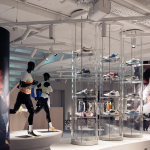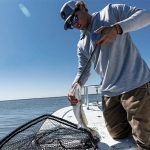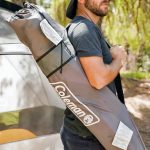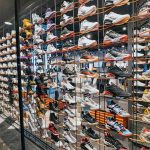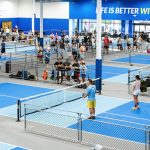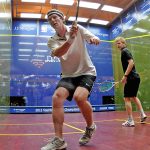The industrys vendors found new ways to boost profits in the second quarter even as sales growth started to moderate a bit. Companies in the Softgoods sector, which includes Footwear and Apparel, saw profit growth outpace sales growth by nearly a three-to-one margin. Conversely, the Hardgoods sector saw improving sales growth, due primarily to acquisitions, but also experienced a decline in profitability due to those same deals.
Sports Executive Weekly presents an overview of second quarter vendor results in the chart on page three. Results are posted for those companies that have reported for the period ended closest to the end of June. If a particular company has not yet issued a report for the period, or the information is for a period ended before the end of May, SEW has opted to wait and add those companies to a full quarter report that will be made available by late September through our Sports Executive Research unit. Additional notes on methodology and changes in format can be found on page four.
Total sales increased 16.6% for the quarter for those companies tracked in this report, while net income rose 23.1% for the period. Because the report is not a clear picture of the entire industry, SEW feels the total numbers are less significant than the trending information provided in the percentage increases and decreases.
Return on Sales, which is the measure of net income as a percentage of sales, increased 50 basis points for the quarter versus the year-ago period, coming in at 7.5% of sales versus 7.0% in Q2 last year. The gross margin for the reporting companies averaged 41.5% of sales for the quarter, up 95 basis points from 40.5% of sales in Q2 LY
While the Hardgoods sales increase outpaced the Softgoods growth in the quarter, the Softgoods sector almost certainly saw more organic growth.
Yes, Nikes strong fiscal Q4 period ended 5/31 got a $78 million lift from the inclusion of the Converse acquisition, while Delta saw a $32.2 million gain from its Soffe deal, Phoenix Footwear got a $5.9 million bump from Royal Robbins and other deals, and Russell picked up nearly $13 million in the Huffy Sports and AAI deals. If you subtract the gains from all those acquisitions, the sector still showed an increase of more than 11.8% for the period.
Conversely, if we subtract out the gains for Brunswick in Marine Engines and Boats, which were also aided by acquisition deals, and take out acquisition-aided growth at Precor, Escalade, Callaway and K2, Inc., the sales increase for Hardgoods rose just 5.0% instead of the 25.0% gain reported.
The honor for most organic growth in the Softgoods sector goes to Deckers, a company that is taking full advantage of its acquisition of the Teva brand. While Deckers didnt buy revenues in the deal, they did get full control of the brand, which is leading to a number of new opportunities for the company. The sudden meteoric growth at Uggs is the other part of the story here, as the company rides a tremendous fashion trend that has Australian and New Zealand sheep working overtime producing wool.
The other Softgoods growth leader was Saucony, which saw its 27.8% gain for the period boosted by a 30.5% increase in sales in the U.S. market as the company readies itself for sale. Much of the increase here can be traced to the large increase in lower priced running product sold to the mall retailers. The VF Outdoor Coalition also got help on the acquisition front, but would have still seen an organic revenue gain of more than 12% for the period.
A trend away from Classics may be at the center of the softer business at K-Swiss and Reebok. K-Swiss sales were off 3.5% in the quarter, but were down 9.8% in the U.S., due primarily to a pull-back at Foot Locker. Reebok posted a slight increase in the sales line, but was actually down almost one percent for the quarter when excluding foreign exchange rate gains. The U.S. business was down 3.2% for the Reebok brand. Apparel was also a major culprit here as Branded continued its decline and Licensed started to hit the fashion wall. While the mall looks to be softening on Classics, the mid-market guys still appear to be committed to the Reebok Classics product, but K-Swiss hasnt made a strong move to that channel of distribution.
Despite showing a 23.9% increase in profits for the quarter, Nike actually held back growth on the Softgoods net income line. Total sector net income would have been up nearly 47% for the quarter without the Nike gain.
Although off of a much lower base, the net income line was also affected by profit declines at Everlast and Reebok, while LaCrosse was the only company posting a loss, slipping into the red for Q2 after posting flat results last year.
One nice surprise came out of Skechers, which swung to a respectable profit for the quarter after posting a loss in the year-ago period. At the end of the day, the nice bump in profits for the quarter came from Deckers (+155%), Brand adidas (+72%), Puma (+49%), Russell (+52%), and Warnacos Swim division, which posted a 51% increase in operating income, due primarily to an 86% increase in operating profits at Speedo.
Looking more specifically at peer group performance, we break the Softgoods sector into three segments for our full report due out in September. Those segments, which include Apparel Only, Athletic Footwear & Apparel, and Outdoor Footwear & Apparel, show distinct patterns in their performance in the quarter. Currently, Apparel Only companies — we will add four to five more companies to the total report in September as they become available — saw a 16% increase in sales for Q2 and saw profits jump more than 41% for the period. Again, this was due in large part to Soffes contribution to the Delta numbers, but Russell also saw a gain from the sale of its stake in Marmot Mountain during the quarter. Margins at Russell and Warnaco Swim pulled overall Apparel margins lower by nearly 20 basis points for Q2.
Apparel Only companies easily surpassed the Return on Sales (ROS) numbers posted by the Footwear/Apparel companies in the period. Apparel ROS came in at 10.5% of sales, up 180 bps from last year. Athletic Footwear/Apparel companies outpaced their cousins on the Outdoor side, posting an 8.2% ROS in Q2 2004 while Outdoor ROS came in around 7.8% of sales.
If the total Salomon business is included they dont break out Footwear and Apparel ROS for the Outdoor segment would have been just 3.9% of sales, thanks to the impact of their Snow Sports business in Q2.
In Hardgoods, the honors for highest sales growth went to companies with significant acquisitions in the last year.
If we assess growth on a purely organic basis, Brunswick still takes the pole position, followed by Precor, which we estimate posted 20% in organic sales gains. By our estimations, K2 Inc. would have been nearly flat, while Callaway would have seen a 7.0% sales decline in the quarter, decreasing 10.6% in the U.S. business.
Surprisingly, it was two golf companies that made up the best of the rest as TaylorMade-adidas Golf posted a 10.7% sales gain for the period, due primarily to currency-aided gains in Asia and Europe, and Adams Golf delivered an 11.9% gain in the quarter, thanks to a nice launch on their Ovation fairway woods and continued strong sales of Idea irons.
In looking at three key segments of the Hardgoods business, each area posted declining profits or increasing losses in the period.
The losses posted by the Snow Sports divisions of companies is understandable, considering that most companies in this area are over-investing in production and development in Q2 as they ramp up for Fall shipments and prepare for the 2005 line offering, but net operating losses for this group still increased 9.5% for the period despite a 22.0% increase in revenues.
In Golf, the 9.6% decline in profits here can be attributed primarily to one deal Callaways acquisition of Top-Flite and ELYs struggle to maintain share in the driver category. Without Callaway in the mix, profits in the Golf segment of Hardgoods would have increased 5.5% for the period. Excluding just the Top-Flite impact, the segment would have seen a 5.0% decline.
In Fitness, it was the issues at Nautilus that pushed segment profits lower, due primarily to that companys move to lower margin Retail sales from their traditional Direct business. Much of this comes as the company repositions itself with more Cardio equipment rather than relying so much on its infomercial Strength product. The nearly 60% drop in net income on flat sales at NLS pushed total Fitness segment profits down almost 29% for the period. Excluding the Nautilus impact, Fitness segment profits would have been up 13% for the period.
Inventories at quarter-end were up 9.4% for the reporting companies, again due primarily to acquisitions. For instance, Softgoods inventories were up 7.6% for the period, driven by an 18.2% increase in inventories at the Apparel Only companies. The Apparel segment increase would be reduced to an 8.9% increase if excluding the effect of the Soffe inventory gain at Delta.
Footwear/Apparel company inventories were up just 6.4% going into the back half of the year and the critical Back-to-School selling season. The Athletic companies saw inventories increase 8.9% at quarter-end, while the Outdoor segment saw a 5.7% increase in inventory. Again, these increases were impacted a great deal by acquisitions and, to a lesser extent, currency fluctuations, a reality that could lead to very few “opportunity buy” possibilities for the retailer in Q3.
For instance, Reebok saw inventories increase 13.3% at the end of Q2, but actually declined roughly 3% when excluding the inventory pick-up in the acquisition of The Hockey Company and the FX rate impact. Nike saw the same impact, with the acquisition of Converse and FX rates accounting for about 6.0% of their 7.8% increase in inventory at their quarter-end. Just eliminating the RBK and NKE FX rate and acquisition impact would reduce the increase in inventories at total Athletic Footwear/Apparel company to just 4.4% at period-end. Add in the impact of currency on the Brand adidas and Puma numbers, and we would be lucky to see inventories increasing more than 4.0% in a period when the market expects double-digit growth.

